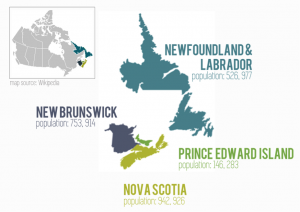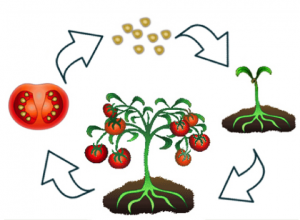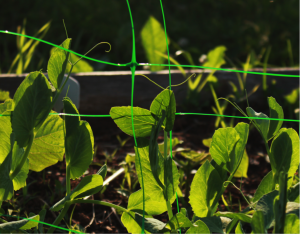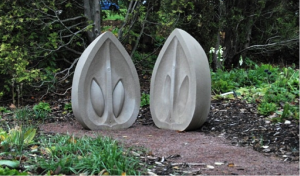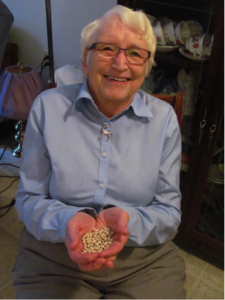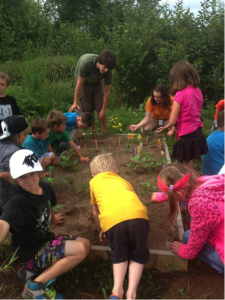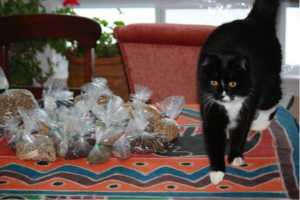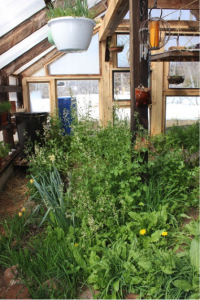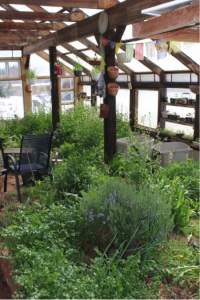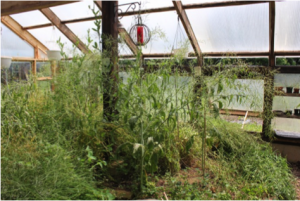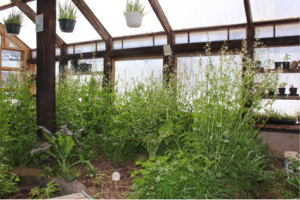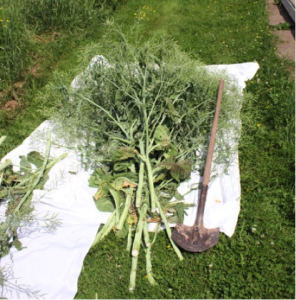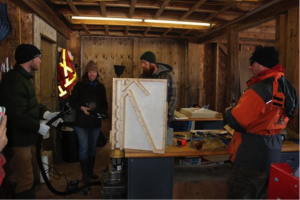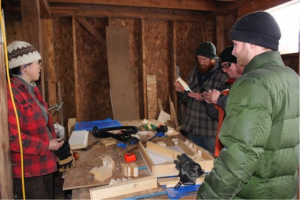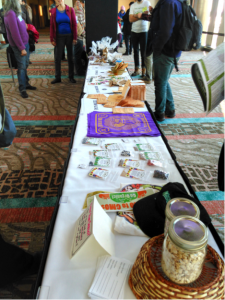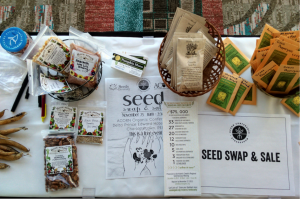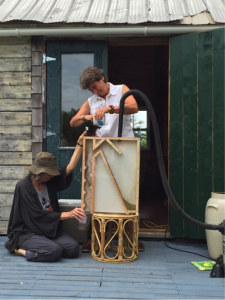A CASE STUDY
01/12/2015
Compiled by Norma Jean Worden-Rogers
Seed Saving in Atlantic Canada – A Case Study
Download as a pdf [17.5 MB]
Seed Saving in Atlantic Canada (small)
Download low-res pdf [3.1 MB]
This work was made possible through generous funding from the Social Sciences and Humanities Research Council of Canada. Thank you to the participants for taking part in the study, and for continuing the talks of food security in the Atlantic Canadian region. Thank you to Su Morin and Irena Knezevic for the continuous support. A final thank you to all of the seed savers who are making our region a more resilient place – you’re brightening the future of the food system.
Executive Summary
Seed saving is an important process that is integral to food security. With climate change altering the longstanding conditions that growers have come to expect, the need for location-specific seed can be a solution to this problem. Harvesting seed that has adapted to local conditions has many benefits ranging from saving money, to increasing local resilience, to ensuring that the crops have adapted to specific growing conditions. This is necessary in a time where large seed companies are creating ‘Swiss-army-knife’ varieties that are marketed as ‘well-rounded’ and ‘adaptable’, but do not flourish in any specific condition therefore often resulting in smaller yields.
This case study explores the relationships that are necessary to create a vibrant seed saving community in the Atlantic Canadian provinces. Due to the small population size of the region, relationships are in crucial for the knowledge transfer, support, and resources required to increase food security. Interviews with partners in the non-profit, institutional, and individual sectors exhibit the significance that collaboration has played in their contribution to seed security. Whether in the form of grant collaboration or resource sharing, these sectors have benefitted from the support system that has been created in Atlantic Canada to make the region more resilient, and ultimately increase prosperity.
“Every seed is the family bible and history of the history of the plant – the amount of information that’s packaged in a single seed is extremely significant.”
Will Bonsall, The Scatterseed Project
Project Overview
Seed saving is a crucial piece of the local food movement that is often under-discussed. The reality in Canada is that much of the seed that originated here is no longer commercially available. When farming went from the hands of local people, to large-scale conventional farming, it was much easier to obtain large amounts of seed that grew moderately well in most places rather than obtain large amounts of locally adapted seed – which did not abundantly exist. The demand for ‘well-rounded’ seed was then born; this seed is often developed in other countries and has the possibility of growing in a wide range of conditions, but does not excel in any particular climate. Since the majority of the seeds are produced in other regions of the world, the self-sufficiency within the Canadian food sector is in dire straits. With nine out of ten bites of food coming from seed, the practice of seed saving is crucial to the development of local resilience and prosperity (Agriculture and Agri-Food Canada, 2013).
There are a number of reasons that using local seeds is valued over their conventional counterparts. Seed that is grown under certain conditions can thrive in that area. With uncertainty of our changing climate, using seed that has already been adapted to a particular area will make it more capable to thrive under the continuously changing local conditions. Locally saving seed encourages the preservation of the gene pool of seed – there has been a significant decrease within the global seed gene pool, which is attributed to so many seeds coming from the ‘well-rounded’ types as noted above. Such a reduction in the gene pool can put varieties at risk of extinction if a disease targeted certain plants.
Although seed saving is an individual practice, the single Canada-wide body that supports seed saving is Seeds of Diversity Canada (SODC); who have representatives that host workshops and promote seed production in every province and territory. Within Atlantic Canada, the organizations documented in this report that are promoting seed security are SODC, The Bauta Family Initiative on Canadian Seed Security (The BFICSS), Atlantic Canadian Organic Regional Network (ACORN), Dalhousie University Agricultural Campus, Memorial University, Ecology Action Centre (EAC), Cumberland Food Action Network (CFAN), community gardens, and farmers. These groups and organizations facilitate workshops and educational sessions to transfer seed saving knowledge in hopes that the skills will create a waterfall effect that allows for increased seed variety. It is important to note that the aforementioned list of seed savers is not exhaustive, and there are additional groups and individuals within the region that are promoting seed security that are not documented in this report.
To quantify seed saving is difficult. However, the success of seed saving in Atlantic Canada can be measured through the observation of partnerships and support within the network of existing seed savers (listed above). Due to the small population of Atlantic Canada (see Figure 1), this co-operation is integral for the success of grants, facilitating long-term projects, and providing continuous education for those interested in food security. For this case study, in-depth interviews were conducted with those in the field of seed saving that incorporate the following themes:
- Seed saving as a tool to build adaptive capacity
- Seed saving as a tool to increase social, economic, and environmental prosperity
- Seed saving as a tool to increase social capital on a local level
- Seed saving as a tool to bridge divides
- Seed saving as a tool to foster innovation and entrepreneurship
Project Resources
Figure 1. The geographic context and populations of each province in Atlantic Canada. Population estimates from census data (2014).
Physical Infrastructure
Within this case study, there are three pieces of infrastructure that are utilized as a result of participating in seed saving which are the tools bought via grants from the Cumberland Ecological Seed Growers Co-operative (CESGC), outdoor education classroom at Salem Elementary School in New Brunswick, and the facilities at the Dalhousie University Agricultural Campus in Nova Scotia.
Seed saving does not require extravagant, nor expensive equipment. The BFICSS and SODC are the sources of monetary investment that are often applied for by local seed-saving groups to allow for some simple equipment to buy. The Bauta Family Initiative on Canadian Seed Security is a national initiative to increase the quality, quantity, and diversity of ecologically grown seed in Canada. Launched in 2013, the program is nationally led by USC Canada in partnership with Seeds of Diversity Canada, and is regionally delivered by host organizations across the country, including the Atlantic Canadian Organic Regional Network for NB, NS, PEI, and NL. The Bauta Family Initiative on Canadian Seed Security is primarily a field program advancing projects in applied research, producer training, and public seed collections. It is also a funding program, offering small “Seed Facilitation Fund” grants to ecological seed producers and community organizations working to advance similar goals. This program is made possible through the generous support of The W. Garfield Weston Foundation.
Additionally, The BFICSS provides support to seed savers outside of monetary resources such as in the form of in-kind donations and organizational support. The CESGC has collaborated to purchase materials to make seed harvesting equipment and seed saving screens. These materials are shared between five farms in Cumberland County, Nova Scotia (see more below).
The outdoor classroom at Salem Elementary School has seed saving embedded into the curriculum. There are four garden beds that have been built that allow the children to see the lifecycle from seed to vegetable. These garden beds belong to the elementary school and their creation was funded through the Environmental Trust Fund which has provided for their maintenance and associated coordinator fees.
Storage of seeds is often the most expensive item to account for, and becomes necessary when dealing with large amounts of seed. If farms are participating in grow-outs intended for the regional seed bank, the seeds are stored at Dalhousie University Agricultural Campus in Truro. The coordinator for this project, funded by The BFICSS, picks up the seed from the farmers, and takes the seed to be tested at the lab for germination rates. The partnership between the institution and organization allows the seed to be stored in an accessible location, and use the office space a few times a year that is needed for testing new seed.
Financial Resources
Due to the majority of these seed saving processes stemming from relationships and partnerships, funding comes from a wide variety of sources. The position to compile the research for this report was made possible by a Social Science and Humanities Research Council of Canada (SSRHC) Insight Grant, a national funding body. However, grants that allow the smaller-scale projects to flourish often come from federal, provincial and municipal sources, as well as in the form of bursaries and scholarships from subsidiary groups. Another important contribution to these projects is in the form of in-kind donations which the projects could not function without. Each project is funded differently, therefore a breakdown of the projects incorporated in the case study are as follows:
Sackville Community Garden (NB): SODC (signage), Carrot Cache (Travel costs, seeds)
Joggins Fossil Institute seed saving garden (NS): Joggins Fossil Institute (salaries)
Desbrisay Community Garden’s seed saving beds (PEI): City of Charlottetown Sustainability Grant (materials), SODC (signage), Carrot Cache, MacLean Foundation
Memorial University of Newfoundland’s seed saving beds (NL): MacLean Foundation
Salem Elementary’s Outdoor Education Classroom (NB): Environmental Trust Fund (materials, coordinator salary)
La Finquita Seeds (NS): The BFICSS
Regional seed bank, Dalhousie University (NS): Dalhousie University, The BFICSS
Network Resources
Non-profit organizations
The resources that are exchanged between non-profit organizations go far beyond financial support. SODC is a national organization with branches in every province and territory in Canada. They house a large seed bank in Waterloo, Ontario, that all of the branches contribute to, and also provide grants for their branches to ensure that sufficient seed saving is occurring throughout Canada. ACORN provides support for farmers, as well as resources for those interested in agriculture in the region. The Atlantic Coordinator of The BFICSS works with ACORN to ensure that seed saving workshops and support are offered within the region. CFAN, supported by the Ecology Action Centre, provides food-related resources to families and individuals within Cumberland County, and assists with the community garden projects at the Sackville, NB and Joggins, NS locations. Tantramar’s Regional Centre for Expertise on Education for Sustainable Development (RCE Tantramar) in New Brunswick obtained the grant responsible for the outdoor education classroom at Salem Elementary School, but funds a single individual for the implementation of environmental education, thus contributing to both non-profit and individual network resources.
Institutional
Dalhousie University Agricultural Campus has provided The BFICSS with office space, and lab space to house the regional seed bank. Having the bank in a central location in Truro, Nova Scotia allows for ease of seed collection from farmers in Atlantic Canada. The university has also lent the project the knowledge and expertise from an associate professor, Dr. Nancy MacLean, who assists with the project. The seed saving gardens at the Memorial University of Newfoundland are also reliant on the institution for their location and maintenance. This seed saving garden is within the community garden at the university.
Individuals
Two individuals who contributed to this case study are funded through other means, but are contributing to regional seed security through these partnerships. Silvana Castillo, a seed grower in Nova Scotia was the recipient of a grant from the The BFICSS. Additionally, Castillo plans seed saving workshops primarily on the Chignecto Isthmus and the Acadian Shore of New Brunswick. The BFICSS has provided a collective, CESGC, with funding to support seed saving activities on their personal farms in order to contribute to local seed security. This funding has allowed collaboration between farms to share equipment and seed saving techniques and practices.
The Seed Saving Model
There are two ways to physically save seed. The model is similar for both (see Figure 3), but there are slight differences between certain plants. To generalize the two methods, they are ‘wet-seeded’ and ‘dry-seeded’. Plants producing dry seed – such as peas, beans, radish, etc. – can be left to dry on the plant, and then harvested when dry, and the seed is saved. The seeds are then stored in a glass jar, or paper bag in a cool, dry place until the following year where they can be planted. The second types of seed are wet seed which come from such plants as zucchini, cucumber, and tomatoes. The seeds require the use of water to extract the seed from their surrounding pulp – a full description of how to save seeds can be referenced on the SODC website (see Websites section at the end of this report).
Figure 3. The seed saving process is similar for all plants – a seed is planted, allowed to grow until maturity, and then the seeds are harvested to be used the following growing season.
The process of saving seed is the final step to close the life cycle of a plant. Therefore the resilience associated with seed saving contributes directly to the food security of a region. The motivation for saving seed varies significantly – the question of ‘why’ individuals began to save seeds was posed to all participants within this study. Their answers provide a snapshot into the personal, societal, environmental, and economic reasons attributed to saving seed which provides the basis for this study:
“I was hoping to save a significant amount of the seeds for my gardens, particularly my favourite varieties.”
Silvana Castillo, La Finquita Seeds
“When the garden first started we were hoping to educate area children about gardening. For many of the children attending the summer camps, this is their first exposure to gardening…Seed growing was a practical solution to gardening in such a short timeframe…The garden plays an important role in helping to keep some of these heirloom bean seed varieties going. For example, the garden always includes a local pea bean (white navy bean) variety that has been growing in the immediate area for over 40 years…In this regard, the seed saving garden is also a means of sharing and celebrating local culture”
Su Morin, SODC (for JFI)
“Build seed sovereignty in PEI – build towards a local seed library.“
Josie Baker, Desbrisay Community Garden’s seed saving garden
Trevor VandenBoer, Memorial University of Newfoundland Seed Saving Gardens wished to save seeds on the basis that all seed grown would sustain the gardens each year; personal, local resiliency was the main motivation.
“Seed saving allows students to be part of every step of gardening.”
Josette MacIssac, Outdoor Education Teacher, Salem Elementary School
“The seed saving plot was an area that plot renters could practice saving seed on an external bed to save space in their own plots. The intention is that skills will be honed so that gardeners will feel equipped to teach other gardeners outside of the SCG how to save seed and its importance. This is in line with the SCG’s principles to promote the sharing of knowledge, which hopes to create a more connected and resilient community.”
Norma Jean Worden-Rogers, Sackville Community Garden Coordinator (2012-2014)
As seen from the participants in the study, the motivation to save seed stems from a wide background. However, a common theme throughout is the collaboration that exists within the act of seed saving. This exists in the simplest form of one organization providing the space required to save seeds, such as that at the Desbrisay and Sackville community gardens, allowing the seed saving workshops to occur under the umbrella of the larger organization.
Larger collaboration exists in monetary form such as grants that make Salem Elementary School’s outdoor education classroom possible, or money to encourage scaling up seed saving operations into a viable business as will be discussed in Silvana Castillo’s story. Seed saving is a communal activity, and the relationships created as a result of striving for seed security are invaluable to ensure longevity and prosperity for seed saving in Atlantic Canada.
Adaptive Capacity
Saving seed helps diversify the things that people grow, as seen in the case of the Sackville Community Garden (SCG). Included in the principles of the SCG, are the efforts to increase knowledge of food sovereignty with our changing climate, and seed security falls within this subject. Through the introduction of a seed saving garden in 2012, not only has the SCG increased its local resilience, but has served as an experiential learning environment.
Experiential learning has allowed a greater population to be exposed to the adaptive capacity associated with saving seed. The partnership between an established organization, such as the SCG which has been a focal point of urban agriculture in Sackville since 2001, and the introduction of a seed saving bed, allow the new addition to be supported by the umbrella organization and have more chances of succeeding. For instance, the plot renters of the SCG are privy to the annual workshop line-up and are able to attend and share the knowledge that they gain with their garden-focused friends. By relying on social systems, the information from such activities such as seed saving, can be distributed to a wider network of individuals. The SCG aims to be a resource hub to facilitate such learning.
The seed saving gardens within the SCG increase community resilience, as discussed by the former coordinator. By creating a cohort of individuals who are versed in the act of saving seed, and are contributing to a local seed saving bank, this provides a type of cushion for seed security under the wider umbrella that is food security. By working with SODC, the SCG acquired heirloom varieties of seed that were used to initiate the seed saving garden and, over the years, have adapted to the local growing conditions. In addition to saving money through seed saving, creating locally adapted seed comes with ecological benefits such as a higher yield and being more tolerant to the weather. Just by educating individuals, the adaptive capacity of a community garden can directly translate into supporting our agricultural sector, as well as sharing skills with the wider community.
“In 2014, with the observed success of the seed saving plot, the SCG steering committee funded the initial start-up of a permanent seed bank. It is open to the community to donate seed, as well as provides seeds to the plot renters. The seed bank is now quite self-sufficient, and more importantly, has encouraged the act of saving seed in the garden much more – if people use the seed from the bank then they generally make a mental note that they must then save a portion of seed from their plot in order to add seed back into the system. Initially the garden was intended to be used as an educational tool – to show plot renters how one may save seed through facilitation of workshops. Because the plots are quite small (4×12’), growing practices that incorporate height as well as companion planting are necessary to make the best use of space. The seed saving plot was an area that plot renters could practice saving seed on an external bed to save space in their own plots.”
Norma Jean Worden-Rogers, Community Garden Coordinator (2012-2014)
Peas being grown in the Sackville Community Garden to be harvested for seed. (Source: Norma Jean Worden-Rogers).
Seeds and Social Capital in Atlantic Canada
Dalhousie University Agricultural Campus Seed Bank
While all of the profiled examples have an element of contributing to social capital via seed saving, the collaboration between institution and non-profit is especially beneficial to both parties for a number of reasons. It provides stability, monetarily as well as location-wise. Institutions can easily provide the facilities that a seed bank requires. Typically the requirements of a seed bank are chest-freezers, and simple equipment such as petri dishes when doing germination testing, scales, jars, silica gel, and envelopes – this requires very little space and can easily be stored at the back of a lab. If an individual organization was to work alone with a seed bank, a rented space to store the freezer and accessories would be required, an added cost. However, through collaboration, an unused corner of a lab can save not-for-profits, such as The BFICSS, the cost of renting a facility, making it accessible to the public in the future.
When fully functioning, the regional seed bank at Dalhousie University Agricultural Campus will provide expertise in the form of publishable research, professors who have dedicated their lives to plant sciences, and a healthy flow of students to assist with research development. Expertise is also warranted in the streamlining of seed distribution by being in a central location that is accessible to farmers with regular opening hours. As mentioned above, having a central location that is accessible, as public institutions tend to be, is necessary for adequate access.
This partnership begun in 2014 between the Dalhousie University Agricultural Campus, SODC, and ACORN. The seeds that make up the bank will be grown by farmers in the Atlantic Canadian region. A portion of the seed will be stored for the long term, a portion for short term, and a portion will be stored as redundant seed in the national bank in Waterloo, Ontario at SODC headquarters where all varieties within similar projects are kept. Keeping seeds in multiple locations increases the security of the variety. The intention of the seed bank is to retain varieties of seed that are culturally, historically, and agronomically important for the Atlantic Canadian region. As of December 2015 there were 29 varieties of vegetable and grain that have been added into the seed bank, with plans of more to be added each year.
Sculpture at Dalhousie University Agricultural Campus. (Source: Dalhousie University)
Desbrisay Community Garden
A collaboration between the Cooper Institute and the Desbrisay Community Garden on Prince Edward Island has a project entitled ‘Seeds of Community’ which is in the process of establishing an interlibrary seed saving regime across the island. The Desbrisay Community Garden is located in downtown Charlottetown, and was founded in 2001 by The Cooper Institute. The community garden now boasts 13 plots that are available to the public to rent for use. This community garden operates under the model that although each plot is for private use, the plots are in a communal area which allows gardeners to grow food in a social environment. The ‘Seeds of Community’ project, founded in 2013, became a part of this community garden when it received a grant from the City of Charlottetown to cover the associated start-up costs. The grant given by the City of Charlottetown covered the initial training sessions attended by both community gardeners and those outside of the city, and to cover the cost of buying local seed.
Once the ‘Seeds of Community’ project succeeded in Charlottetown, it expanded across the Island. “‘Seeds of Community’ has worked from Summerside to Montague, and the seeds from the garden bed [in Charlottetown] contribute to the seed library that has about the same reach.” (Josie Baker, Desbrisay Community Garden). The project would not have achieved such an expansion without their thorough design:
- “Build grassroots networks by connecting with communities of rural and urban farmers and gardeners who are interested in seed saving.
- Provide “start-up” resources to set up 3 seed libraries in the province.
- Providing training on seed saving in different communities.
- Provide some seed for rare varieties of vegetables that may be well adapted for this region.
- Identify at least 5 growers who will grow seed specifically for the seed library.
- Hold seed share events in at least 3 public libraries in different areas of the province.
- Cooperate and collaborate with complementary initiatives such as community gardens, etc.”
(Cooper Institute, 2013)
The majority of funding for this project has been attributed to crowdfunding, making ‘start-up kits’ available to interested growers-turned-seed-savers. These kits include seeds that are locally adapted to the PEI climate, and information on how to grow and save the seed in subsequent years. Similarly to how typical seed banks operate, funding is required to cover the cost of freezers which are required in each community to preserve seed over the long term, mileage for the coordinator to transport seed throughout the region, as well as give workshops to train communities in the process of seed saving.
“We put in plants each year, and the seed is cleaned and packaged by the volunteers, and it is then distributed at the library. Cooper institute coordinates the ‘Seeds of Community’ project, and does seed workshops across the province.”
The partnership between the well-established Desbrisay Community Garden and the ‘Seeds of Community’ project fostered social capital and learning, using seed saving as the medium. Plot renters within the community garden have experience growing vegetables, and are therefore well placed to expand their knowledge to include the process of saving seed. Incorporating this educational space within a highly successful garden ensures that a sense of ownership over the seed can be expected. Josie Baker, the coordinator of the project explains how the seed saving garden functions in a typical year:
The seed bank model is one that increases social capital of the region as it necessitates social relationships and stimulates sharing of knowledge and resources. The process of growers producing seed that is regionally adapted, then donating it to their local seed saving bank for the sole purpose of the product being distributed to other farmers in the region to increase food security in times of increasing instability is a prime example of this. Not only is social capital positive in terms of its environmental implication (i.e. resilient seed production), but it is economically viable, and contributes to community wellbeing. Growers produce seed in order to swap their product with others – this takes out the cost of buying seed on an annual basis. While buying seed may not seem to accrue a significant cost, the expenditure can add up to be substantial. Through knowledge transfer, seed savers can produce various seeds that can be exchanged for mutual benefit. That is successful social capital in the purest sense.
Bridging Divides with Seed Saving
Salem Elementary School
Where saving seed may not have been of importance to many individuals in Atlantic Canada in the past, this is changing and having it part of a set curriculum makes it come to the forefront of their learning. At Salem Elementary School in Sackville, New Brunswick this is exactly what has happened. In the summer of 2013, RCE Tantramar obtained a grant from the Environmental Trust Fund to develop and implement an outdoor classroom to be used by the entire school. As part of the project, a gardening component was added. This consisted of each class growing some sort of vegetable in order to rekindle the linkage between people and plate. The entire process of food production has been incorporated into the curriculum, from seed propagation to growing, harvesting, and seed saving.
“Seed saving allows students to be part of every step of gardening. They were very interested to learn that the seeds are actually inside the fruit, vegetable, flower, etc, and that seed saving is quite simple. Many students were excited to bring these activities home and seed save with their parents/families. The students have now saved their own seeds which we will plant next spring in the school gardens and they can observe the entire lifecycle of a plant.” — Josette MacIssac, Outdoor Education Teacher, Salem Elementary School
While only certain grades have committed to seeing the food production from start to finish, Salem Elementary School had an Outdoor Education Day in 2015 which allowed students to rotate through stations that taught different subjects over the course of the day. One station was dedicated to seed saving. The seeds for this activity came from the Sackville Community Garden, about one kilometer away, which were organically grown and of heirloom variety. The children were taught the basics of saving beans, specifically, and the seeds were saved to be planted during the following spring in the classroom, or in the outdoor garden boxes. This partnership between the elementary school, local community garden, and the Environmental Trust Fund grant all made this activity possible and taught the children who had not gotten a chance to save seeds, the process and purpose.
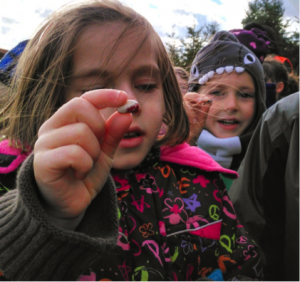

Right: Children marvel at the seeds they acquire after they winnow the beans. Left: Children participate in separating the seed from chaff (Source: Norma Jean Worden-Rogers).
Joggins Fossil Institute
The Seed Saving Garden at the Joggins Fossil Institute (JFI) began as a partnership between the Atlantic division of SODC, the River Hebert Gardening Club, and the JFI with funding stemming from an initial start-up grant. This garden was made possible by the many groups that assisted with its beginnings, and have continued to do so, making the garden a sustainable entity. The implementation of a seed saving garden has allowed the divide between the general population and food stability to be breached with this addition of an affordable, community-centred education program.
The seed saving garden at JFI has a year-round purpose that is fueled by the surrounding community. During the winter, Clean Nova Scotia receives funding to hire Youth Conservation Corps summer students; SODC – Atlantic, JFI, and Clean Nova Scotia assist with the interview process and with the program intended for 5-20 children for the coming summer. The summer camp is led by the YCC students, in addition to occasional collaboration with the River Hebert Gardening Club (RHGC).
Normally a project such as this would run into difficulty due to the 8-week program period, however, to ensure that the gardens produce while the children are tending to the plots, the gardens primarily produce beans (to be harvested for seed) and carrots (for eating). Therefore, the summer camp provides dual purpose learning – both food growing and seed saving. “The children are always intrigued by the interesting colours and varieties of the bean seeds and their experience often inspires them to want to grow some on their own at home, which we readily encourage.” (Su Morin, SODC).
“The garden plays an important role in helping to keep some of these heirloom bean seed varieties going. For example, the garden always includes a local pea bean (white navy bean) variety that has been growing in the immediate area for over 40 years. A story of this bean is shared with the children at the planting day each summer and many of the children recognize the local name that is associated with the bean seed, affectionately known as Hope Harrison’s Saturday Night Baked Bean. In this regard, the seed saving garden is also a means of sharing and celebrating local culture as well. Lastly, these small gardens produce a large quantity of seed, which is then used to educate local youth and the community at large about the importance of local seed saving. These seeds are given away at seed saving workshops and exchanges, which saves gardeners money, while keeping local seed circulating.”
Su Morin, SODC
Hope Harrison with her beans (Source: Su Morin).
When the summer camp ends, the seeds are left to dry on the plants. This is when community groups assist with the completion of the seed saving. Su Morin (SODC) and volunteers from the River Hebert Gardening Club winnow, dry, and save the seeds from the gardens. Once properly stored, enough seeds are kept to plant for next season’s JFI gardens and the rest are distributed. The distribution is undertaken by Broadfork Farm and the Cumberland Food Action Network, and ACORN distributes the regionally adapted and untreated seeds within seed swap networks throughout Nova Scotia and New Brunswick.
Morin attributes the continued success of this garden to the innovative partnerships between the associated groups – citing the location of the gardens at JFI as being stable for the future because the gardens align with JFI’s core values of community education.
The adaptation of a task, like seed saving, into a teachable skill to children bridges the growing divide between people and plate. As Jamie Oliver famously observed in American schools when filming his 2010-11 television show American Food Revolution, some children can no longer identify vegetables, or know where their food is coming from. Through teaching the lifecycle of a seed, children can then make connections to the wider environment, and more importantly strengthen the connections and knowledge surrounding food. When such connections are made, the information is then passed along to parents, siblings, and teachers. The provided examples of seed saving are to show that it is not limited to adults, and is an integral concept that fits into any biology class, as seen at Salem Elementary School, or a summer camp, as seen at JFI.
Children are taught how to plant, led by JFI Employees as part of their summer camp program (Source: Su Morin).
Innovation and Entrepreneurship
Profile: Silvana Castillo
Silvana Castillo, a small-scale seed producer in Wallace, Nova Scotia, attributes where she is now with her seed company, La Finquita Seeds, to the successful partnerships that have allowed her to become an entrepreneur. From the outset of Silvana’s seed saving career, she had a partnership with a seed grower in Ontario who coached her on the practice of saving heirloom seed. Silvana produced this seed for the Ontario company for many years, and eventually began saving for herself, friends, and giving seed to SODC. Silvana continued to share her knowledge by organizing Seedy Saturday events, workshops that give individuals a space to exchange and share seeds, in Atlantic Canada.
“[T]he partnerships with these organizations and colleague seed savers from the area [were essential]. It was helpful in terms of providing training and networking, personalized guidance and motivation ([from] the two coordinators. My colleague seed savers from the Amherst shore have been helpful in testing my seeds and giving me feedback.”
Silvana Castillo, La Finquita Seeds
In 2014, Castillo was recognized for her work with seed saving in Atlantic Canada and was the successful recipient of a grant to assist with the cost of ‘scaling up’ her seed production. This grant was funded by The BFICSS, and would support Castillo to focus her efforts on wild plants, specifically “their use as edibles, medicinals, for soil protection, companions in the orchard, for pollination, as sanctuaries for wildlife.” With Castillo’s knowledge of the biodynamic system she wishes to target two groups of individuals, in addition to providing seed to the general population within Atlantic Canada. “I am going to try to get urban gardeners [on board], as they are not used to being surrounded by wild plants (some of which are considered weeds in the rural areas). Also target people that have cottages with problems of erosion.” Furthermore, Castillo is exploring the process of removing seed from their substrate – typically the husk of the seed is thrown away, however in some plant varieties the husk is also extremely nutritious (like psyllium husk). In the hope of using more of a plant than has been traditionally consumed, Castillo hopes to market these husks as an edible product that will be sold in addition to her seeds.
Inside La Finquita’s greenhouse during the winter of 2014. Castillo selects the hardiest plants so that her varieties will thrive in -10oC temperatures. (Source: Silvana Castillo).
Castillo has benefitted from the relationships within the seed saving industry – sprouting from her initial exchange of seeds to transition into becoming a grower for the Ontario-based company; to organizing seed events and networking with like-minded Atlantic Canadians; to providing locally adapted seed to friends and farmers throughout the region; to eventually becoming a producer of seed that will not only provide a wealth of varieties for growers in Atlantic Canada, but also encourage native species propagation to create diversified growing spaces. The introduction of native species not only gives the grower an enhanced food system, but is also conducive to ecological resilience through improving habitat, and increasing diversity within the ecosystem. As Castillo envisioned, this increase in diversity can mitigate erosion and can increase overall health of the soil. With the connections that Castillo has made within the region, she has been, and will continue to be a successful contributor to seed resilience within Atlantic Canada.
Top left: Giant mustard is left in the greenhouse over the winter, and goes to seed once the weather warms up in the spring. Top right: Arugula is left to go to seed in Castillo’s greenhouses. Bottom left: The crop of La Finquita giant mustard once it has gone to seed in the spring. (Source: Silvana Castillo)
Cumberland Ecological Seed Growers Co-operative
A collective of farmers on the North Shore of Nova Scotia, called the Cumberland Ecological Seed Growers Co-operative, have been collaborating on grants to share equipment to be used to save seeds. This grant, funded by The BFICSS, has been successfully attained by this group multiple times. The CESGC comprises of Broadfork Farm, Good Thyme Farm, La Finquita Seeds, Side by Each Farm, and Wysmykal Farm. The group writes grants to include these five farms, and builds equipment that they can share. They get together throughout the year to use the equipment, provide feedback for each other, and trade seeds. Applying for grants in partnerships ensures that the reach of the equipment will be far wider than if applications were sent from multiple farms. Furthermore, sharing knowledge and the building of seed saving equipment benefits a larger group of individuals than if the project had been undertaken several times by single individuals. “My colleague seed savers from the Amherst shore have been helpful in testing my seeds and giving me feedback” (Silvana Castillo, La Finquita Seeds). This collaboration allows for a stronger collective of seed savers to flourish within the region, and be provided with funding to innovatively create the equipment necessary to save locally adapted seed, which can then be provide to the wider marketplace.
Members from the CESGC working together to build a column blower, used to clean large quantities of seed. (Source: Silvana Castillo)
Social, Economic, and Environmental Prosperity
Seed saving in Atlantic Canada has gone far beyond just seed distribution, or single individuals harvesting their plants that flower. Seed saving in Atlantic Canada benefits all facets of society through the various directions that the individual, or group, wishes to take. Furthermore, the way that seed saving contributes to the social, economic, and environmental prosperity of the region can be seen within the sectors fueled by non-profits, institutions, and individuals.
The non-profit sector has strong ties to societal influence because the organizations involved work with a wide reach of society. The groups that were profiled within this study range from agricultural sector with ACORN, to CFAN who targets deprived groups, to gardens that influence student gardeners during their summer holidays, to very young children at JFI who are in summer camps. The reach that non-profit organizations have is extensive. Furthermore, because much of the work that non-profits do is grant-based, they can therefore offer programming for free, or discounted rates. For example, because the initial start-up cost of seed saving gardens (Memorial University of Newfoundland, SCG, Desbrisay, JFI) are covered by a grant, the seeds harvested the following year can be given away to the local community and the rest used in the garden the following year. With each year more seeds can make it into the hands of the community, making fewer individuals resort to buying seed for food propagation. By putting more seeds in the hands of local people and growers, this means that more people are able to grow their own food which is positive for the environment (for food miles and for biodiversity). Growing food for oneself increases personal resilience, and diverts away from conventional farming which has been shown to be detrimental for ecosystem biodiversity and causes the majority of pollution of waterways due to pesticide use. Through simply growing and saving seed, non-profits create a waterfall effect that reaches a wide audience on a wide range of issues that go far beyond simply saving seed.
The contribution that institutions serve, as documented in this case study, has been an integral part of the seed saving system that is required to ensure regional resilience is obtained. The Dalhousie University Agricultural Campus serves as the distribution centre for seed of Atlantic Canada. Curated by The BFICSS, this project relies on individual farmers to produce seed that will then be housed to preserve local varieties that will grow in conditions specific to the Atlantic region (including soils, rainfall, and temperature). The seed will also be kept by farmers who will continue to grow the crops in their respective horticultural landscape which is necessary as it preserves the seed outside of the bank. The societal role that institutions provide is focused more on the individuals who are already interested in seed saving or at least food and the environment, rather than on recruiting which is left to the non-profits. The environmental purpose attributed to a seed bank is, again, linked to food miles, local growing, biodiversity, a divestment from conventional agriculture, and selecting seeds that require less of everything – less watering, less pesticides, and less fuss – because the seeds know, and thrive, in the climate in which they are growing.
In November 2015 Charlottetown, PEI hosted a conference led by ACORN, and one entire day was devoted to the methods of saving seed which was attended by hundreds of individuals. During the conference, a teacher-student type of classroom was created where all of the farmers, all of the representatives from various organizations, were then taught by the speaker to enhance their skills and knowledge surrounding seed saving. This is an example of how an interested group of individuals can work together to share information that benefits the environment, as well as being cost-effective.
Seed swap table: ACORN Conference & Trade Show, Charlottetown, PEI. (Source: Norma Jean Worden-Rogers).
Seeds available for swapping at the ACORN Conference included Hope Seeds (Nova Scotia), Hawthorn Farm (Ontario), and La Finquita Seeds (Nova Scotia). (Source: Norma Jean Worden-Rogers)
The profile of Silvana Castillo and La Finquita Seeds, and the CESGC are examples of individuals who have benefitted from the collaborations that are present in Atlantic Canada. Castillo organizes Seedy Saturday events, and has aligned her occupation with her love of seed growing and saving. The CESGC hinges on social interaction through the collaboration of multiple farms to obtain a grant, in order to improve their art of seed saving and continue to grow organic crops in the Cumberland region.
Silvana Castillo (right) takes her column blower acquired from grants in the CESGC to the Acadian shore of New Brunswick to help fellow seed savers. (Source: Silvana Castillo)
One gap that was identified was the lack of seed availability in Cumberland and Colchester counties. This is interesting because, through participating in the regional seed bank, there are numerous farms within those regions that are participating in seed saving and even contributing multiple varieties to the seed bank. However it is apparent that there is still a lack of locally adapted seed available to the public in these regions. In theory, this gap should be filled once the seed bank has enough seed to distribute to those wishing to acquire regionally adapted seed, but for the time being this is an area with very low seed security.
Challenges and Successes
The challenges associated with these projects have been the vandalism within the public spaces. Vandals have wrecked signage at the Desbrisay seed saving garden, as well as cutting trellises at the Sackville Community Garden. While it is important for urban gardening to be present in high density populations, vandalism is not atypical with such high visibility locations. Another problem that is often an issue is the difficulty in volunteer retention throughout the projects, especially pertaining to employment as the majority of the projects are grant-based and job security once the grant ends is uncertain. However, there have been many successes as well – seed saving gardens have been introduced in all of the Atlantic Provinces. There are also several gardens in the region that did not participate in this study but it is important to note that they do exist. The collaboration that has occurred is especially rewarding to see, and the interviewees’ excitement for seed saving development in Atlantic Canada is tangible.
Future Plans
One of the large plans for the future is to continue soliciting farmers to participate in grow-outs across Atlantic Canada in order to contribute to the seed bank at the Dalhousie University Agricultural Campus. The continuation of seed saving will ensure that more seed is available for communities so that all growers have access to regionally adapted seed that thrive in the conditions in which they are being grown. The CESGC will continue to save seed on a regional level, and will contribute to the seed bank as well. As a participant within this cooperative, Silvana Castillo, specifically pointed, the development of relationships between urban gardeners and cottage owners to increase planting native species can increase ecosystem stability.
Also, efforts to launch an additional seed library in Wolfville, NS, are underway, spearheaded by the JustUs! Centre for Small Farms.
The continuation of educating individuals to save seeds as seen in all of the community gardening projects across Prince Edward Island, Nova Scotia, New Brunswick, and Newfoundland and Labrador is vital to increase security within our food systems.
- The Memorial University of Newfoundland seed saving garden expressed an interest to expand their seed saving space, as there has been significant support for saving seed and there are unused garden spaces that could be managed better.
- The JFI gardens, as summed up by Su Morin, “[T]his program could run indefinitely, even without the [Youth Conservation Corps] summer students, as long as the institution (JFI) is committed to supporting it, which I cannot foresee ever changing, even w new management, as the programming aligns with their core values of community education, etc. This is important to consider when choosing sites and institutions for programming.”
- Salem Elementary poses an important curriculum development; the integration of seed saving into a school-based curriculum is a simple way to teach children, from the ground up, what needs to be done to ensure that food systems are increasingly sustainable.
The continuation of these organizations is essential. Furthermore, creating seed saving opportunities that are sustainable once the infrastructure is in place is the ultimate goal. Since seed saving really only requires seeds, and a bit of effort and knowledge, it is a simple investment. Once the initial gardens have been successful, efforts can continued to be made to create more gardens in hopes of having such a space in each community throughout Atlantic Canada.
Online Resources
Commercial seed producers in Atlantic Canada (From seeds.ca)
Newfoundland
Angelgrove Tree Seed Company
Nova Scotia
Annapolis Seeds
Halifax Seed Company Inc.
Hope Seeds and Perennials
Howard Dill Enterprises
Incredible Seed Company
Pumpkin Moon Farm
La Finquita Seeds
New Brunswick
Corn Hill Nursery Ltd.
Mapple Farm
Prince Edward Island
Vessey’s Seeds Ltd.
Websites
ACORN – http://acornorganic.org
The Bauta Family Initiative on Canadian Seed Security – http://seedsecurity.ca
Broadfork Farm – http://broadforkfarm.ca
Cumberland Food Action Network – http://cumberlandfoodactionnetwork.ca
Dalhousie University Agricultural Campus – http://dal.ca/about-dal/agriculrual-campus.html
Joggins Fossil Institute – http://jogginsfossilcliffs.net
JustUs Centre for Small Farms – http://centreforsmallfarms.ca
La Finquita Seeds – http://lafinquitans.wix.com
Seeds of Diversity Canada – http://seeds.ca
Seed Saving Resource: https://www.seeds.ca/diversity/seedsaving
Sackville Community Garden – http://sackvillecommunitygarden.wordpress.com
Tantramar’s Regional Centre of Expertise on Education for Sustainable Development – http://rcetantramar.org
USC Canada – http://usc-canada.org
References
Agriculture and Agri-Food Canada. 2013. Canada’s Seed Industry [Online]. Accessed on 10 November 2015 at: http://www.agr.gc.ca/eng/industry-markets-and-trade/statistics-and-market-information/by-product-sector/crops/pulses-and-special-crops-canadian-industry/canada-s-seed-industry/?id=1174596024742
Cooper Institute. 2013. Cooper Institute’s Seeds of Community project aims to create a network of seed libraries [Online]. Available at: http://www.cooperinstitute.ca/content/page/front_news/id/160

